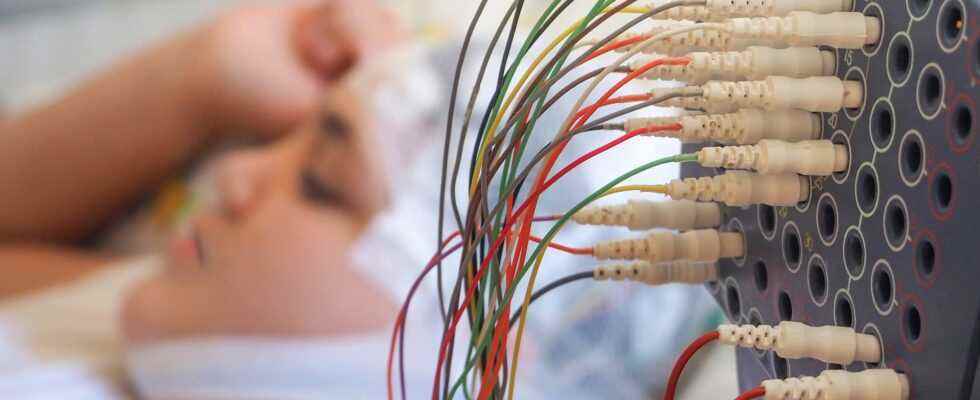If people with brain injuries no longer react recognizable when spoken to, this is considered a bad sign. Those affected are therefore regularly asked to move their hand or stick out their tongue. If they repeatedly do not react, it is difficult to predict whether they will recover: the injuries are usually so severe that they do not wake up again. But the EEG can give reason for hope, as a study in The Lancet Neurology shows. If the EEG shows signs of consciousness, the chances of recovery are better.
In the summer of 2021, a research group from New York examined almost 200 patients with acute brain injuries who no longer showed a visible reaction when spoken to. The doctors used electroencephalography to record brain activity before and after the speech and compared the brain waves with machine learning. In 14 percent they observed a so-called cognitive-motor dissociation: while those affected appeared unconscious on the outside, their brain activity changed when spoken to.
A good sign, as it turned out: Most of these patients were able to speak again after three months. After a year, 41 percent were so much better that they were able to manage large parts of the day on their own; in contrast, only 10 percent of those in whom the EEG had not registered any evidence of consciousness managed to do so.
So far, there has been no reliable way to predict which patients will recover, says study leader Jan Claassen, a neurologist at Columbia University. “In the future, the dissociation between cognitive and motor functions could be another factor in the prognosis.” The hidden awareness reveals more about the further course than other established characteristics such as age or the cause of the brain damage. Currently, however, only a few centers would use EEG to search for covert consciousness. The group therefore wants to develop AI software that can infer consciousness from brain waves. They have already published the algorithm for free use.
